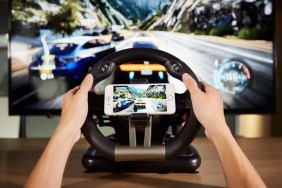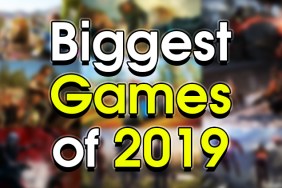
Do you feel that there is any particular genre of video game that showcases the STEM System technology best?
The STEM System has the potential to enhance the experience in every genre of game. Even within our company, people have different favorites. An easy example to illustrate is the ability to use your hands naturally in a first-person shooter. With the STEM System you can look forward and shoot (or toss a grenade) to the side just like you would (but shouldn’t) in real life. Using traditional game controls your view is tied to the direction you shoot, which is not always natural. The STEM System allows the game developer to decouple the characters view from the targeting or action. These experiences are further accentuated when using a VR headset; now when you tilt your head down, you see your virtual hands doing exactly what your real hands are doing.
What is the greatest challenge in designing a new technology used to interface with video games?
A constant challenge for new input devices like the STEM System is nurturing a large enough install base to create a compelling use case for developers and consumers. We think that with the growing popularity of VR technologies like the Oculus Rift, the STEM System is in a great position to become the preferred input device for VR gaming and interaction. Building on the growing install base of Razer Hydra developers for the Oculus Rift allows us to hit the ground running and quickly get compelling new content into the hands of users.
You’ve mentioned that you’re working with Oculus to make sure the STEM System and Oculus Rift are as compatible as possible. What are your thoughts on Oculus Rift, and do you think the technologies are complementary?
Absolutely, we see great synergy with Oculus VR. The Oculus Rift’s introduction led to the resurrection of VR gaming. The Razer Hydra, that uses our motion tracking technology, sold out worldwide within two months following the release of the Rift last March. The STEM System is a perfect compliment to head-mounted displays like the Rift.
Any distraction or intrusion from the “real world” degrades the virtual reality experience. Traditional input devices such as the mouse and keyboard or gamepad are unnatural in VR, serving as constant reminders to users of the world outside the virtual environment. The STEM System, provides that “Aha!” moment when the user puts on the VR headset, and then looks down and sees his or her virtual hands moving exactly as they do in real life.
Today’s rapidly growing community of VR developers realize that the input device needs to be improved in order to deliver the uninterrupted and immersive experience they’re after.
For an example of the interaction we’re describing see this video of the wireless STEM System prototype w/ Oculus Rift head tracking (viewable below).
Do you see the STEM System as a keystone toward the realization of full virtual reality?
Yes. In a simplified view of the ecosystem, we see the need for VR displays (like the Oculus Rift), stationary locomotion equipment (like the Virtuix Omni), and motion tracking and control for interactions with the virtual world such as our STEM System. With the STEM System, we’re increasing the level of interaction with the virtual world by eliminating many of the things that can break the immersion. We focused on very low latency in our system, high precision tracking, a wide range of operation, five tracking points and wireless operation. Along with no line of sight requirements or drift, the STEM System allows gamers to enter the game, with no distractions that interrupt their virtual reality experience.
July 2014 is the expected date for shipment to Kickstarter backers, but when can the general public expect to get their hands on it?
Our plan is to get the consumer version out by the 2014 holiday season. We’ll also have fully functional pre production prototypes by CES 2014. We will start shipping our pre production STEM Systems in April to certain Kickstarter backers at the high reward tiers. We’ll be shipping out STEM Systems to our backers in the order we received their pledges starting in July of 2014.
You can learn more about the STEM System by visiting the official site.








